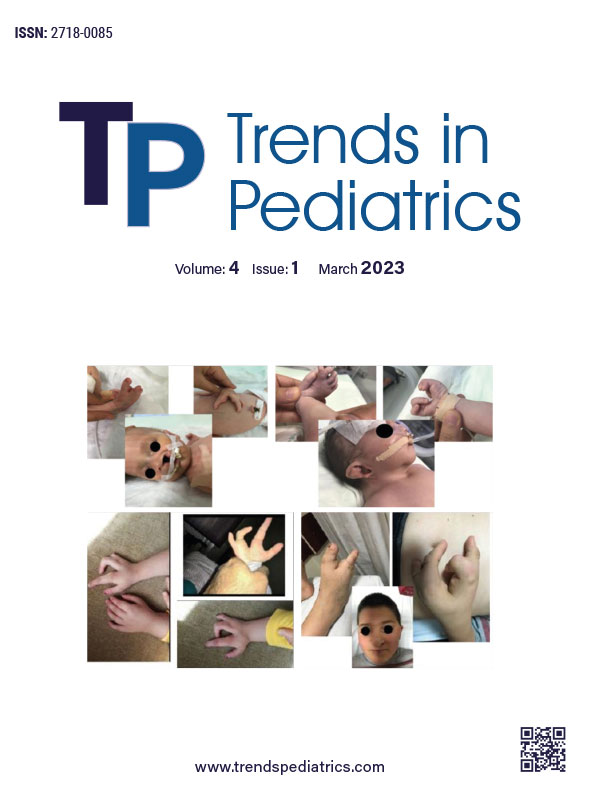Abstract
Childhood fractures are becoming an important public health problem around the world due to the increasing incidence. Fractures in children are more than twice as common as in adults. The incidence of pediatric fractures is affected by many factors such as the age and sex of the child and seasonal and sociocultural factors. One of the leading causes of childhood fractures is simple falls and approximately 50% of childhood fractures were reported to occur after a simple fall. On the other hand, childhood fractures are also very common at home or school and after traffic accidents. A child’s bone has a lower density and more porous structure than an adult’s bone. The periosteum of bone in children is thicker and stimulates new bone formation more strongly. As a result, new bone formation is completed in less time. The remodeling potential of a child’s bone is also an advantage that differentiates pediatric treatment from adult treatment. Complications like delayed union, nonunion, re-fracture, myositis ossificans, and joint stiffness are also very rare in children. But physeal damage may cause serious complications like growth arrest or angular deformities. Despite the advancement in technology and increasing options for minimally invasive surgeries, closed reduction and conservative treatment methods are still the mainstay of treatment in children.
Keywords: Childhood fractures, remodeling, torus fracture, conservative treatment
References
- Cooper C, Dennison EM, Leufkens HGM, Bishop N, van Staa TP. Epidemiology of childhood fractures in Britain: a study using the general practice research database. J Bone Miner Res. 2004;19:1976-81. https://doi.org/10.1359/JBMR.040902
- Hedström EM, Svensson O, Bergström U, Michno P. Epidemiology of fractures in children and adolescents. Acta Orthop. 2010;81:148-53. https://doi.org/10.3109/17453671003628780
- Cheng JC, Shen WY. Limb fracture pattern in different pediatric age groups: a study of 3,350 children. J Orthop Trauma. 1993;7:15-22. https://doi.org/10.1097/00005131-199302000-00004
- Landin LA. Fracture patterns in children: analysis of 8, 682 fractures with special reference to incidence, etiology and secular changes. Acta Orthop Scand. 1983;54(Suppl 202):3-109. https://doi.org/10.3109/17453678309155630
- Rennie L, Court-Brown CM, Mok JYQ, Beattie TF. The epidemiology of fractures in children. Injury. 2007;38:913-22. https://doi.org/10.1016/j.injury.2007.01.036
- De Mattos CBR, Binitie O, Dormans JP. Pathological fractures in children. Bone Joint Res. 2012;1:272-80. https://doi.org/10.1302/2046-3758.110.2000120
- Kalenderer Ö, Gürcü T, Reisoğlu A, Ağuş H. Acil service kırık nedeniyle başvuran çocuk hastalarda kırıkların sıklık ve dağılımı. Acta Orthop Traumatol Turc. 2006;40:384-7.
- Hagino H, Yamamoto K, Teshima R, Kishimoto H, Nakamura T. Fracture incidence and bone mineral density of the distal radius in Japanese children. Arch Orthop Trauma Surg. 1990;109:262-4. https://doi.org/10.1007/BF00419940
- Laffoy M. Childhood accidents at home. Ir Med J. 1997;90:26-7.
- Masterson E, Borton D, O’Brien T. Victims of our climate. Injury. 1993;24:247-8. https://doi.org/10.1016/0020-1383(93)90179-a
- Nathorst Westfelt JA. Environmental factors in childhood accidents. A prospective study in Göteborg, Sweden. Acta Paediatr Scand Suppl. 1982;291:1-75.
- Johnstone EW, Foster BK. Chapter 2: The Biological Aspects of Children's Fractures. In: Beaty HJ, Kasser JR, editors. Rockwood and Wilkins' Fractures in Children, 5th ed. Philadelphia, PA: Lippincott, Williams and Wilkins; 2001:21-47.
- Pritchett JW. Growth plate activity in the upper extremity. Clin Orthop Relat Res. 1991;:235-42.
- Wallace ME, Hoffman EB. Remodelling of angular deformity after femoral shaft fractures in children. J Bone Joint Surg Br. 1992;74:765-9. https://doi.org/10.1302/0301-620X.74B5.1527131
- Greiff J, Bergmann F. Growth disturbance following fracture of the tibia in children. Acta Orthop Scand. 1980;51:315-20. https://doi.org/10.3109/17453678008990805
- Wilkins KE. Principles of fracture remodeling in children. Injury. 2005;36 Suppl 1:A3-11. https://doi.org/10.1016/j.injury.2004.12.007
- Ryöppy S, Karaharju EO. Alteration of epiphyseal growth by an experimentally produced angular deformity. Acta Orthop Scand. 1974;45:490-8. https://doi.org/10.3109/17453677408989172
- Pauwels F. A clinical observation as example and proof of functional adaptation of bone through longitudinal growth. Z Orthop Ihre Grenzgeb. 1975;113:1-5.
- Vorlat P, De Boeck H. Bowing fractures of the forearm in children: a long-term followup. Clin Orthop Relat Res. 2003;233-7. https://doi.org/10.1097/01.blo.0000072901.36018.25
- Ogden JA. The uniqueness of growing bones. In: Rockwood CA Jr, Wilkins KE, King RE, editors. Fractures in Children, Vol 3. Philadelphia; JB Lippincott; 1984:1-86.
- Ogden JA. Injury to the growth mechanisms of the immature skeleton. Skeletal Radiol. 1981;6:237-53. https://doi.org/10.1007/BF00347197
- Ogden JA. Anatomy and physiology of skeletal development. In: Ogden JA, editor. Skeletal Injury in the Child. Philadelphia: Lea-Febiger; 1982:16-40.
- Davidson JS, Brown DJ, Barnes SN, Bruce CE. Simple treatment for torus fractures of the distal radius. J Bone Joint Surg Br. 2001;83-B:1173-5. https://doi.org/10.1302/0301-620X.83B8.0831173
- West S, Andrews J, Bebbington A, Ennis O, Alderman P. Buckle fractures of the distal radius are safely treated in a soft bandage: a randomized prospective trial of bandage versus plaster cast. J Pediatr Orthop. 2005;25:322-5. https://doi.org/10.1097/01.bpo.0000152909.16045.38
- Vinz H. Change in the resistance properties of compact bone tissue in the course of aging. Gegenbaurs Morphol Jahrb. 1970;115:257-72.
- Sanders WE, Heckman JD. Traumatic plastic deformation of the radius and ulna. A closed method of correction of deformity. Clin Orthop Relat Res. 1984;188:58-67. https://doi.org/10.1097/00003086-198409000-00008
- Vittas D, Larsen E, Torp-Pedersen S. Angular remodeling of midshaft forearm fractures in children. Clin Orthop Relat Res. 1991;265:261-4. https://doi.org/10.1097/00003086-199104000-00030
Copyright and license
Copyright © 2023 The author(s). This is an open-access article published by Aydın Pediatric Society under the terms of the Creative Commons Attribution License (CC BY) which permits unrestricted use, distribution, and reproduction in any medium or format, provided the original work is properly cited.














